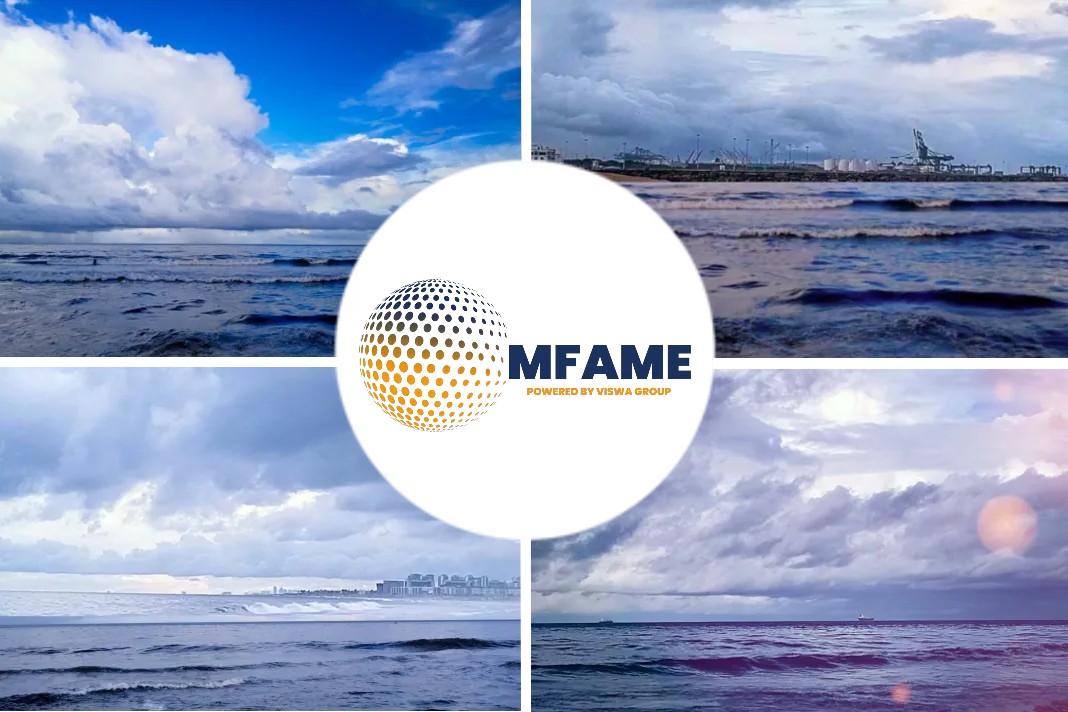- In August we told how Maersk had decided on how it would source the ‘green’ methanol which it clearly sees as one of the fuels of the future.
- Last week the ocean box carrier announced details of the eight 16,000 TEU container ships it will introduce to be powered by the gas.
A recent news article published in the Handy Shipping Guide states that once Again Danish Giant Takes a Gamble on Container Ship Design.
Decarbonisation issues
Obviously the issue here is decarbonisation and, although burning methane will not be seen as the ultimate solution to maritime emissions, Maersk clearly believes it will prove at least a major stepping stone across the stream to zero.
The newly designed vessels are to be built by Hyundai Heavy Industries, each equipped with an innovative dual-fuel engine setup that can operate on methanol and conventional low-sulphur fuel. With fuel capacity, the vessels will be able to complete an entire round-trip, for example Asia-Europe, on green methanol alone.
Design of the ship
The ships will be 350 metres long, 53.5 metres wide and, Maersk claims, will look significantly different from what has been seen before for any larger container vessels. The crew accommodation and bridge will be located at the bow to enable increased container capacity. The funnel will be in the aft, and only on one side of the vessel, thereby providing further space for cargo. This separation between accommodation and funnel will also improve efficiency when at the port.
5 years of time for the project
The project has taken almost five years to come to fruition crossing uncharted naval design territory, such as ensuring crew comfort with the accommodation placed in the more exposed location. Moreover, adequate hull strength was also a key parameter to safeguard, with the accommodation block normally working as a hull ‘stiffener’ when placed further backwards. New arrangements for lifeboats and navigational lights had to be developed, plus new cameras to support the captain’s view when navigating.
Claims from Maersk
Maersk claims the new power source and design will mean 20% improved energy efficiency per transported container when comparing to the industry average for vessels in this size. Additionally, the entire series is expected to save around one million tonnes of annual CO2 emissions.
Whilst customers are clamouring for ways the shipping companies can credit them with doing their bit to save the planet, the method of obtaining any new ‘biofuels’ will be under scrutiny. In August we gave details of who Maersk had lined up to be their methanol supplier of choice and claims of carbon neutrality will need verification if they are to be taken seriously as production of biomethanol requires extraction of the gas from plant based waste product (à la vache qui pète).
Other methods to produce gas
There are of course other methods to produce the gas, large amounts of electricity, green hydrogen and recovered CO2 combines to make e-methanol which is also considered a green alternative. Grey and blue methanol, derived from a combination of natural gas and other factors respectively are not generally considered as ‘green’ as the first two options.
All these factors will complicate things for those who wish evidence of, or to prove to others, their green credentials and we can look forward to a veritable crop of certification outfits ready to examine and analyse the cases individually (for a fee naturally).
A complete different infrastructure required
The fuel however does have a massive advantage as compared to the obvious alternatives such as liquefied natural gas (LNG). This requires a completely different infrastructure in that when liquid it shrinks to 600 times less than in is gaseous state, but requires a temperature of -260 degrees Fahrenheit (-162 Celcius) to do so. Methanol liquefies at ambient temperature simplifying the processes of bunkering and storing it completely, virtually every major world port has facilities capable of storing and bunkering already to hand.
So, as when it introduced the Triple E Series of 18,000+ TEU box ships over 10 years ago, the first generation of container carriers of such a size, the announcement means the Danish giant has again put down a marker. In 2011 the other lines took a deep breath and took up the challenge. With technological innovations coming thick and fast it will be interesting to see which way the Maersk competitors jump this time.
Did you subscribe to our daily Newsletter?
It’s Free! Click here to Subscribe
Source: Splash 24×7
























